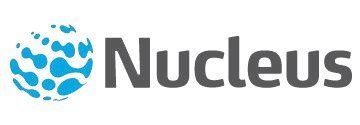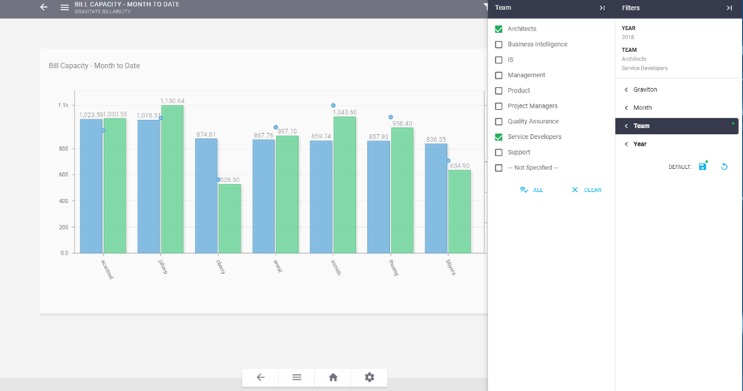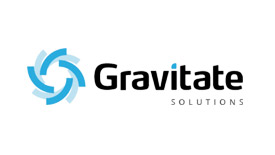Gravitate Solutions is a company made up of “passionate technologists” who adapt robust data management solutions to meet the particular needs of member-based organizations. For example, Gravitate worked with the 15,000-member Endocrine Society to overhaul and upgrade its association management system to include powerful eCommerce, membership management, and data analytics tools.
Member-based association data management is a booming niche, and Gravitate is growing incredibly fast, according to Rob Sapko, vice president of operations. “I started here in 2013 during a very exciting time in the company’s growth as we were on our way to being recognized as one of the 500/5,000 fastest-growing private companies in the United States by Inc. Magazine for the second consecutive year,” he says. “We moved from No. 444 to No. 405 and since then have been named to Inc.’s Top 5000 three more times.”
For a project-based organization like Gravitate, that kind of growth means more projects—so many more and in such variety that better project management emerged as Sapko’s top priority soon after he started as PMO.
“Typically, we are working concurrently with 80 to 100 clients on projects ranging from a five-hour website change to enterprise system overhauls involving staff augmentation that might take us 1,000 hours or more,” he explains. “We grew to that level rather quickly and were facing growth-related challenges, such as generating proper status reports and managing resource availability. We wanted to address the issue before client communications suffered.”
Sapko says managing and forecasting resource availability was also particularly problematic. “Because some of our projects are short term and some are very long term, our resources—our coders and solution developers—have to switch from one project to another depending on priorities, but setting those priorities intelligently with the existing spreadsheet-based system was very difficult. It also made normal business decisions, such as hiring and planning, very difficult.”
Sapko saw the need for a better and more comprehensive project management solution, one that could adequately monitor the quantity and diversity of projects that was becoming the new normal for Gravitate while also automatically setting and distributing priorities for resource allocation in real time, based on conditions that were shifting daily. Nor did he run into resistance when suggesting as much to the company’s founders; after all, Gravitate Solutions is a company with a core competency to develop and apply data analytics and other enterprise software tools.
That competency made it difficult to choose a particular solution, and the firm had considered building their own project management tool. Ultimately, Gravitate chose LiquidPlanner, an enterprise-level, cloud-served solution that was powerful and elegant enough to satisfy passionate technologists who pride themselves on the development of superb enterprise resource planning solutions.
The Right Solution
“Selling the idea to staff was a little difficult,” Sapko admits. “Many liked the freedom and versatility of spreadsheets, but we knew spreadsheets were too limited. As we discussed building something ourselves, we reached consensus around going with a product that was already built, and focusing our R&D efforts on our data analytics product, Nucleus.”

Ten different solutions were initially identified for consideration, and four of those were selected for deep-dive analyses. Of those, LiquidPlanner was a clear winner for Sapko based on one key feature. “The major advantage of LiquidPlanner was its ease of use and seeing near real-time availability and real-time downstream implications of changes,” he says, referring to LiquidPlanner’s industry-first predictive scheduling engine. “The competitors we looked at, some very well known, did not really handle changing conditions well. LiquidPlanner can easily adapt to rapidly changing conditions, for example, by recalculating completion dates, basically on the fly.”
What Sapko was looking for in a PM solution was what project managers should look for: does the solution save managers time and effort? “If there isn’t a way to quickly and automatically set priorities based on incoming information, then what’s the point?” he says. “We don’t have time to figure out for ourselves what needs changing, and entering and processing all that information manually would take a dedicated full-time employee. The automated real-time updating is critical to my role here.”
Gravitate implemented LiquidPlanner in 2015. Based on what they’d learned during their due-diligence research, the implementation was broad and comprehensive. “We started using it for multiple projects immediately—basically, most of our current projects and all the new ones that came in,” says Sapko, “and it all went very well. For one thing, within a couple of weeks, we were able to eliminate a weekly planning meeting that had become cumbersome and time-consuming.”
Resource allocation also improved almost immediately. “From a communications standpoint, we knew right away when a developer was close to finishing up on a particular project,” he says. “That meant we could reassign them more efficiently, with less downtime between projects, and we could do all that within LiquidPlanner, securely, without emails or meetings or other communication between managers and developers.”
Right out of the box and with little customization needed, LiquidPlanner was solving problems for Gravitate Solutions, but eventually, the skilled developers did find a way to extend LiquidPlanner in a way that made their work even easier.
An Impressive API
In addition to LiquidPlanner’s immediate utility as a PM solution, Sapko and his team have been thoroughly impressed with its application programming interface (API), which allows them to pull data from LiquidPlanner to make decisions using Gravitate’s own data visualization tool, called Nucleus.
“We have built Nucleus ‘connectors’ to more than 50 software solutions (such as Salesforce, for example),” Sapko says, “and the LiquidPlanner API is as robust and easy-to-use as any we have encountered.
“The LiquidPlanner/Nucleus visualizations (example below) include views, such as actual allocations per employee overlaid with target productivity goals and availability. This has helped us load-balance portfolios and better project long-term profitability.”

Coming from a company noted for its expertise in developing enterprise-level solutions for a diverse group of clients, this is high praise indeed. Not only did LiquidPlanner immediately resolve critical business challenges for Gravitate Solutions, but it was also versatile and powerful enough to provide real value when this group of passionate technologists blended the data from LiquidPlanner with performance metrics in Nucleus to make better-informed decisions.


